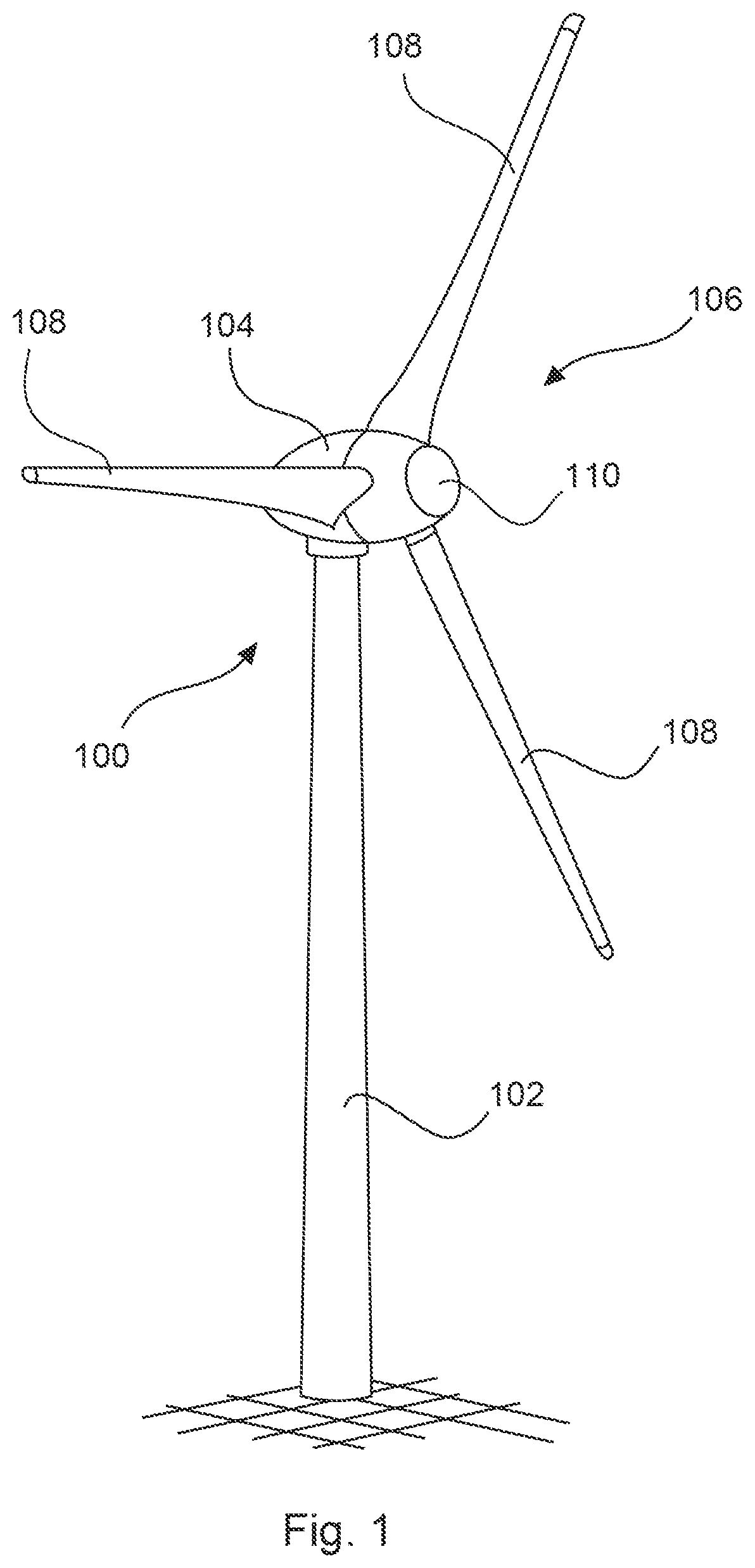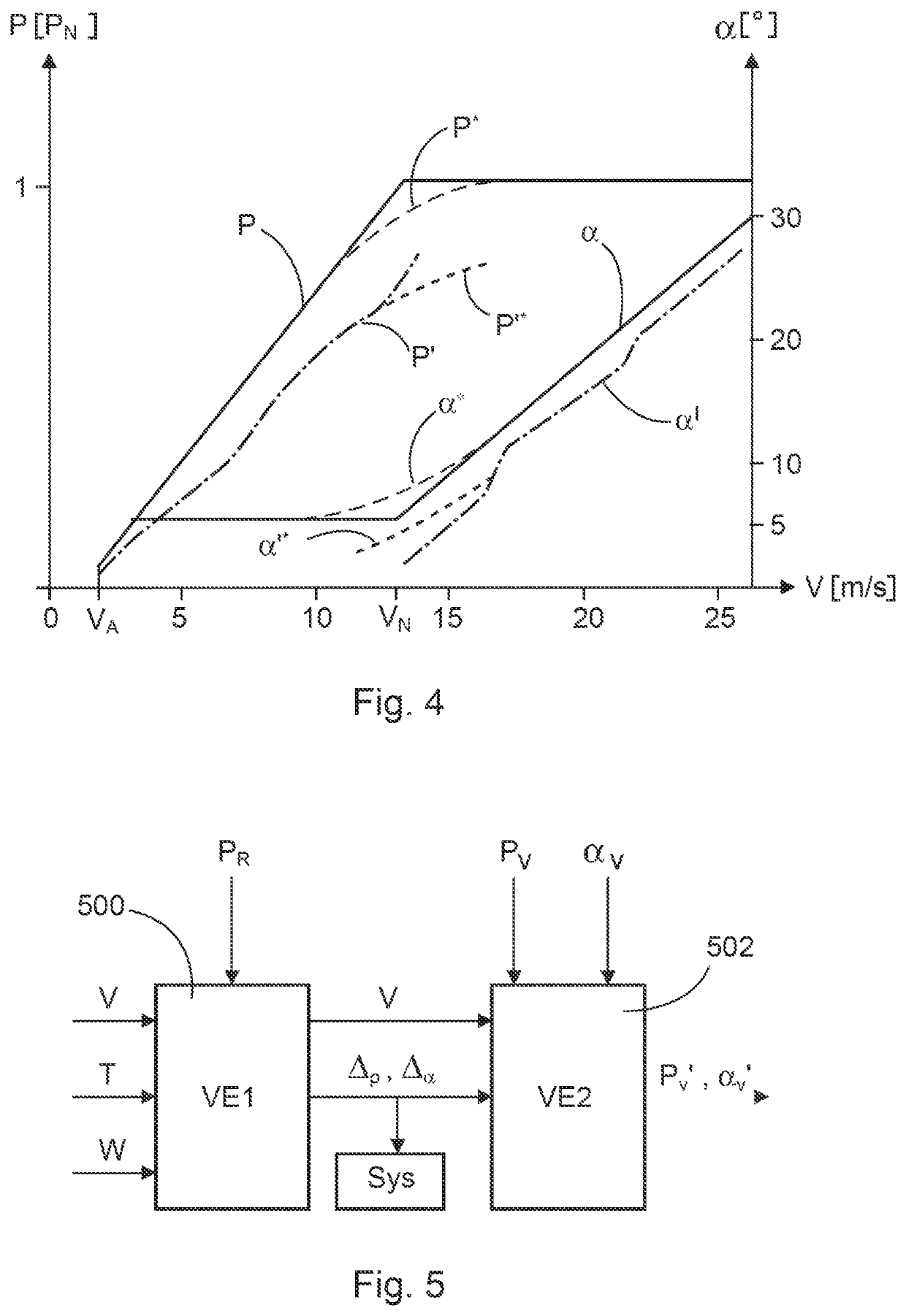Method for detecting an accretion of ice on a wind turbine
a wind turbine and ice accretion technology, which is applied in the direction of wind turbines, engine control parameters, motors, etc., can solve the problems of ice accretion, affecting the aerodynamic behavior of the rotor blade, and affecting the rotor blade. , to achieve the effect of reducing the risk of ice shedding
- Summary
- Abstract
- Description
- Claims
- Application Information
AI Technical Summary
Benefits of technology
Problems solved by technology
Method used
Image
Examples
Embodiment Construction
[0094]FIG. 1 shows a wind turbine 100 having a tower 102 and a nacelle 104. Arranged on the nacelle 104 is a rotor 106 that has three rotor blades 108 and a spinner 110 is. During operation, the wind causes the rotor 106 to rotate, thereby driving a generator in the nacelle 104.
[0095]FIG. 2 shows a diagram of the behavior of a deviation Δ of a recorded wind speed from a wind speed assigned to a recorded operating variable, and the deviation, which is thus called the wind speed deviation, is represented as a function of the wind speed V. The wind speed V is plotted on the abscissa with the unit m / s. The deviation Δ is normalized to a deviation measure. The deviation at rated wind speed VN may be used as a deviation measure for normalization. It was recognized that such wind speed deviations between normal operation and operation with accretion of ice depend on the wind speed and therefore further investigations were carried out. In simulations, operating variables in an operation wit...
PUM
 Login to View More
Login to View More Abstract
Description
Claims
Application Information
 Login to View More
Login to View More - R&D
- Intellectual Property
- Life Sciences
- Materials
- Tech Scout
- Unparalleled Data Quality
- Higher Quality Content
- 60% Fewer Hallucinations
Browse by: Latest US Patents, China's latest patents, Technical Efficacy Thesaurus, Application Domain, Technology Topic, Popular Technical Reports.
© 2025 PatSnap. All rights reserved.Legal|Privacy policy|Modern Slavery Act Transparency Statement|Sitemap|About US| Contact US: help@patsnap.com



